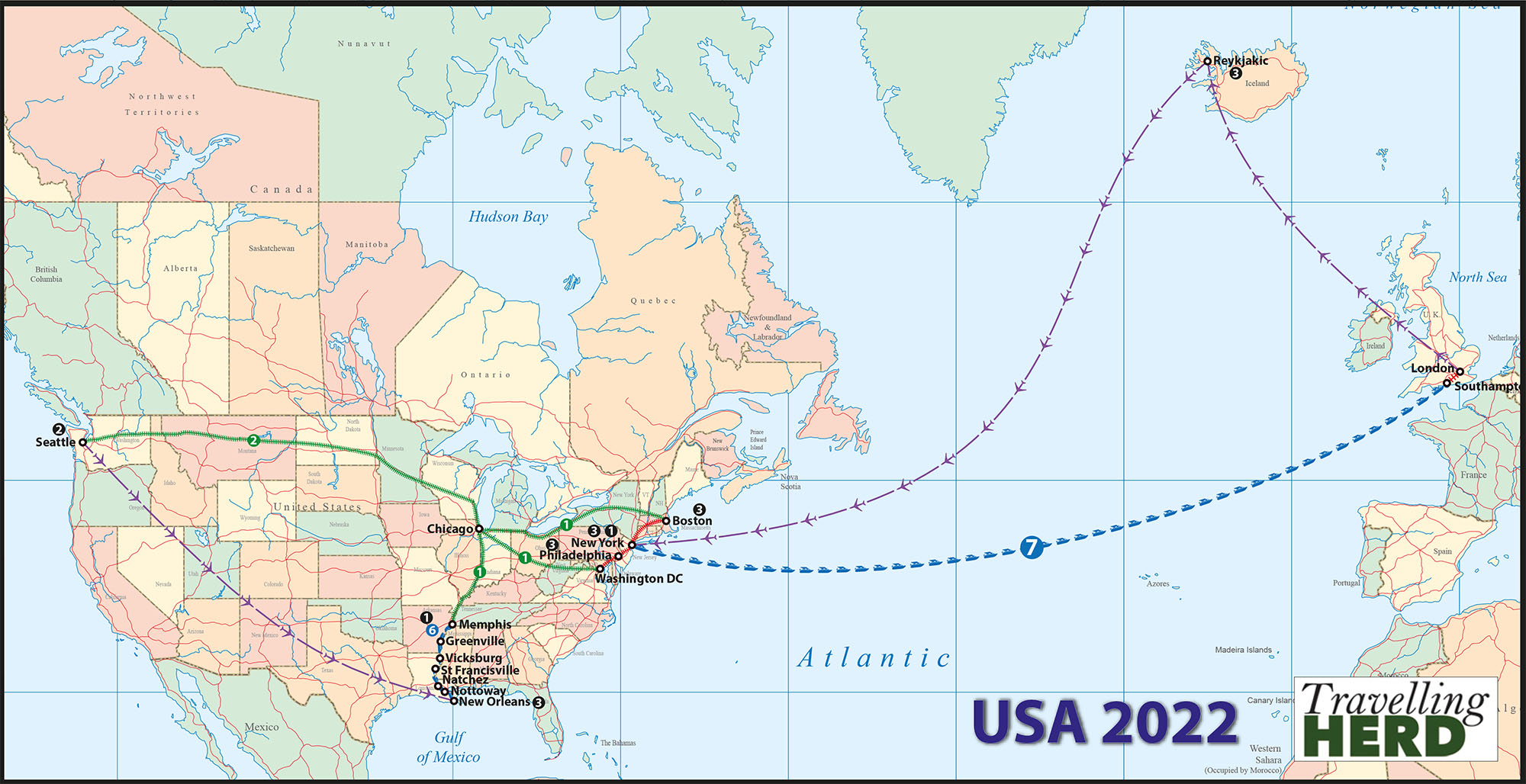Wednesday 25th May 2022
We had originally hoped to start the day by going up the Willis Tower but the weather had different plans. The forecast did not indicate much improvement for tomorrow so we will need to save this for a return visit. As Chicago is a major railway intersection, and Robert is planning more transcontinental train trips here we will hopefully return.
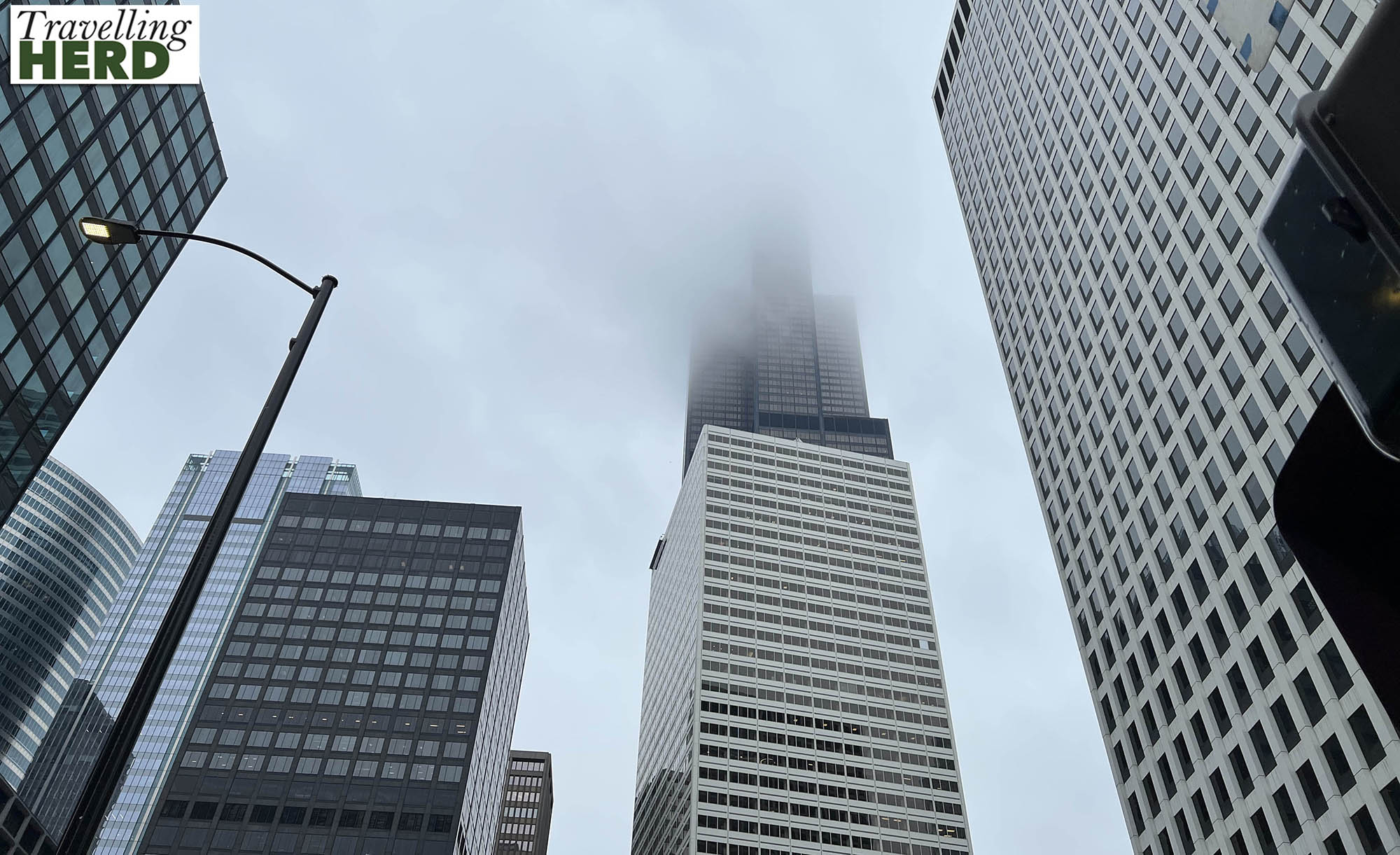
Instead we decided to see the city from lower down and booked an Architecture Boat Tour along the Chicago River. Our tour guide said that he had found the perfect job as he never stopped talking. He was certainly very knowledgeable and the tour proved to be most informative.
Here is just a small selection of the things we learned, not all of which have accompanying photographs.
The white glazed terracotta tiles on the Wrigley Building, which we admired on our first fleeting visit to Chicago, are fire resistant but will not stand up to power washing so have to be hand cleaned by people suspended from the building.
The curvaceous Marina Towers complex [seen in the video below right] was built in 1968 at a time when not many people lived by the river so the development was designed to include lots of amenities, including parking. Fears that cars would be driven straight off the edge and into the river proved unfounded. In fact this has only happened twice, once in Steve McQueen’s last movie The Hunter and once as an homage to the same McQueen film in an insurance commercial.
Many of the buildings feature glass to reflect the distinctive colour of the river [see above], which is the result of the interaction between the clay riverbed, lake water and algae.
The three branches of the Chicago River – the North Branch, the South Branch and the Main Branch meet at Wolf Point and Chicago’s municipal device/city symbol, which is similar to the letter ‘Y’, is a representation of this meeting of the waters.
The name Chicago comes from the Algonquin language: ‘shikaakwa’ meaning ‘striped skunk’ or ‘onion’ as when settlers arrived the lakes were surrounded by wild onions. Matilda felt there was quite a difference between a skunk and an onion and that perhaps this lacked linguistic precision while our guide contrasted the nickname ‘Big Apple’ with the rather less appealing “Smelly Onion”.
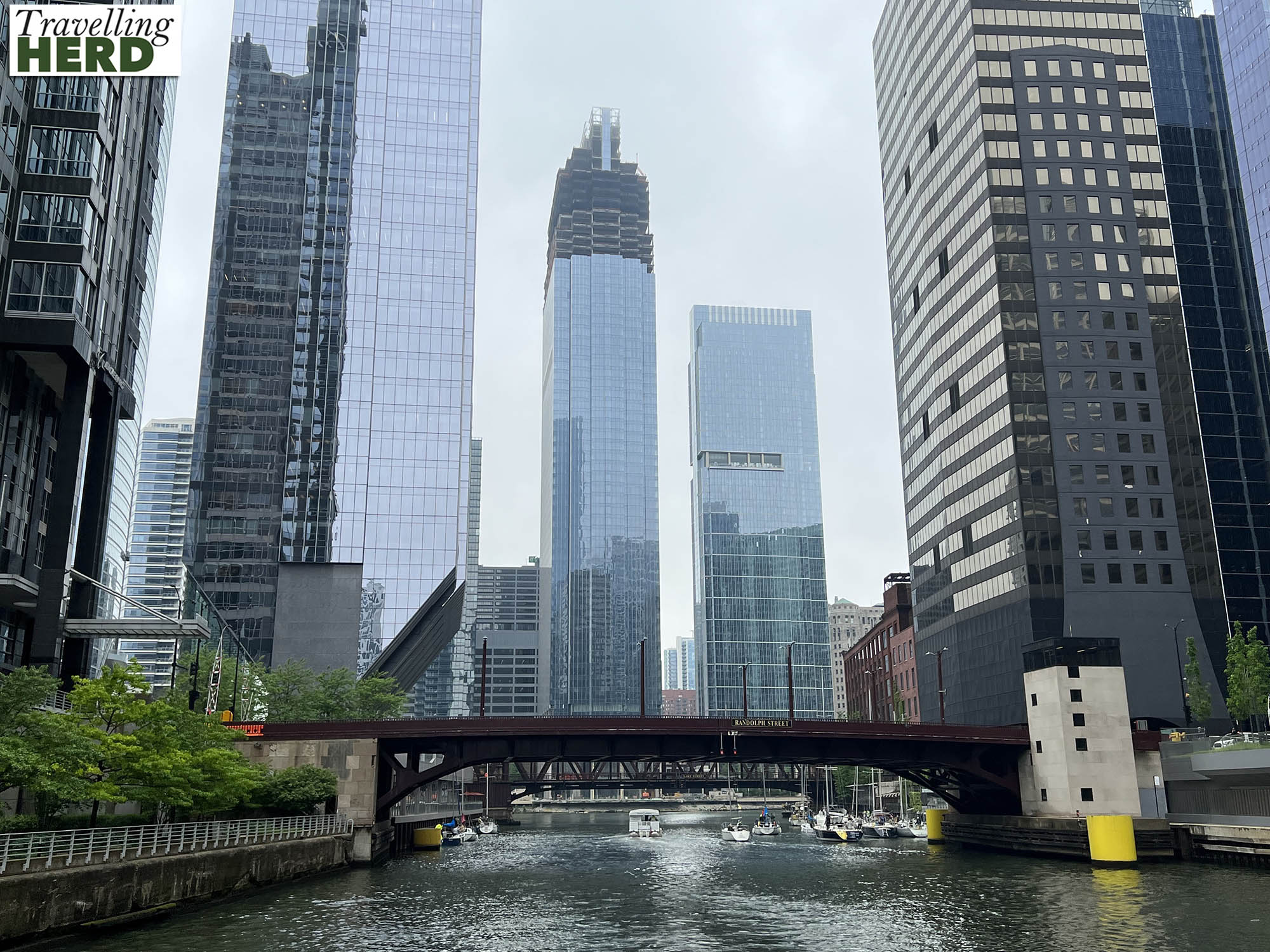
One building uses river water as a coolant and filters the water before it is returned to the river cleaner than it was when it left.
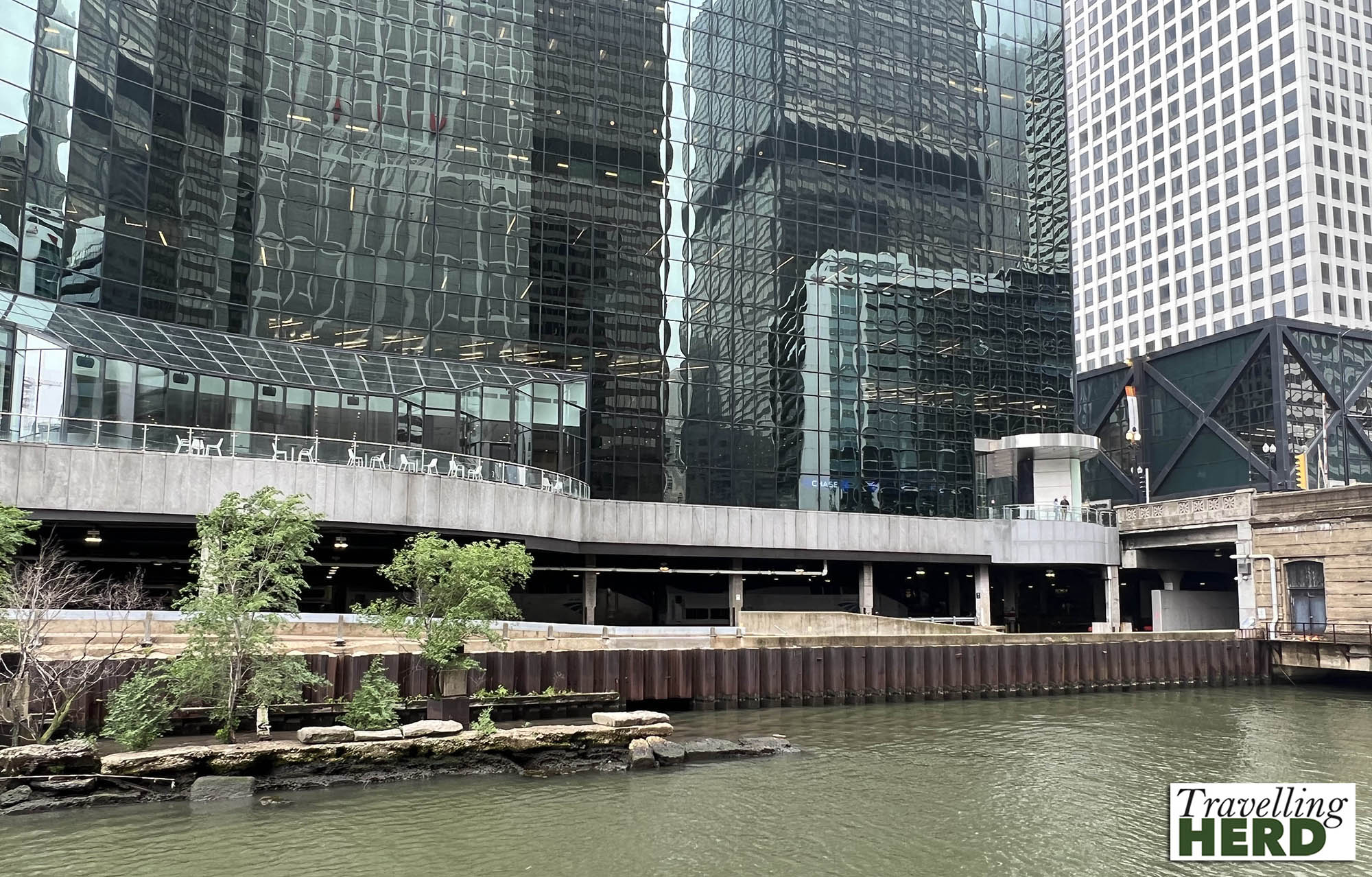
The Home Insurance Building in Chicago, completed in 1885, was a 10-story building widely recognised as the first to use steel skeleton frame construction with reinforced concrete [not pictured].
We had crossed the vertical lift bridge by train on our way into the city. Built in 1912, it is still operational and Robert thought it looked strangely familiar.
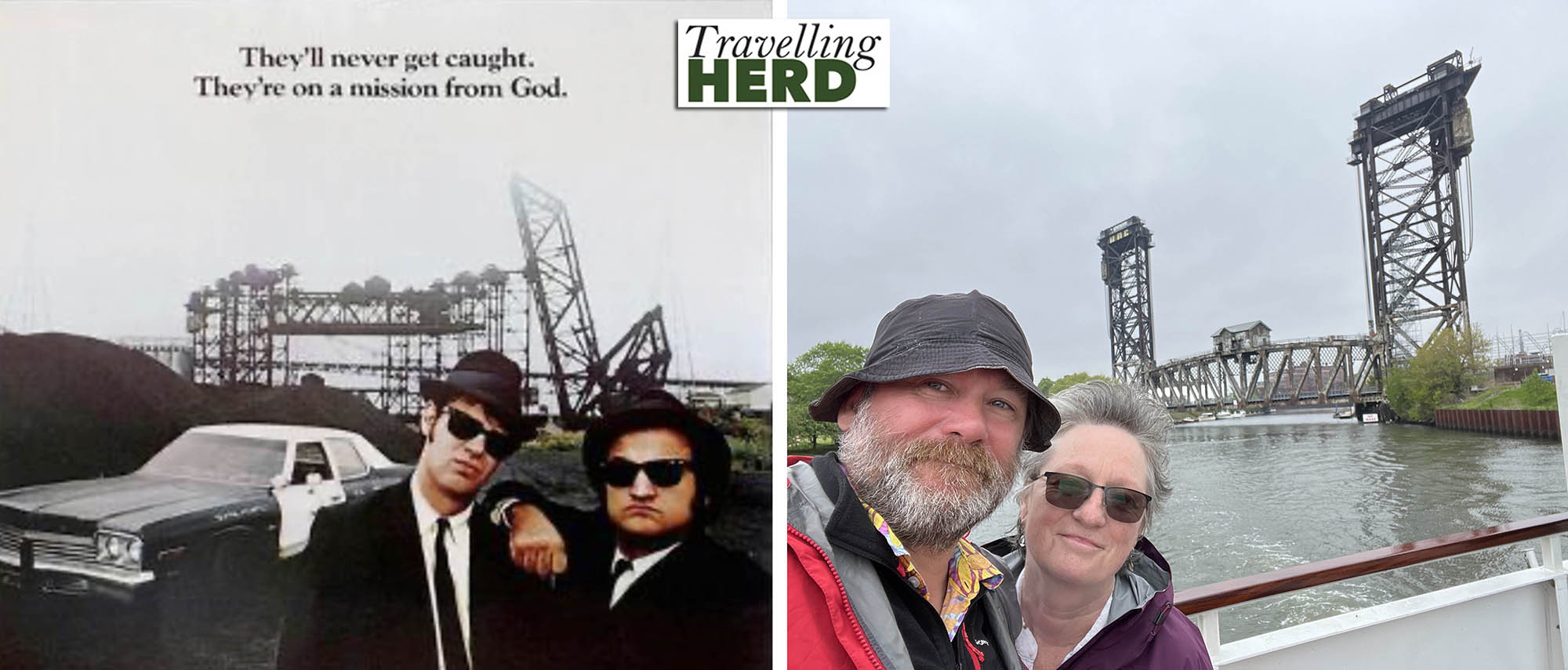
The Carbide and Carbon Building [now the Pendry Hotel] was built for the Carbide and Carbon Company which developed the first dry cell battery. Completed in 1929, it is a beautiful, green and gold Art Deco extravagance. We were told that the green building combined with the gold top is meant to look like a champagne bottle and was a deliberately taunting prohibition.
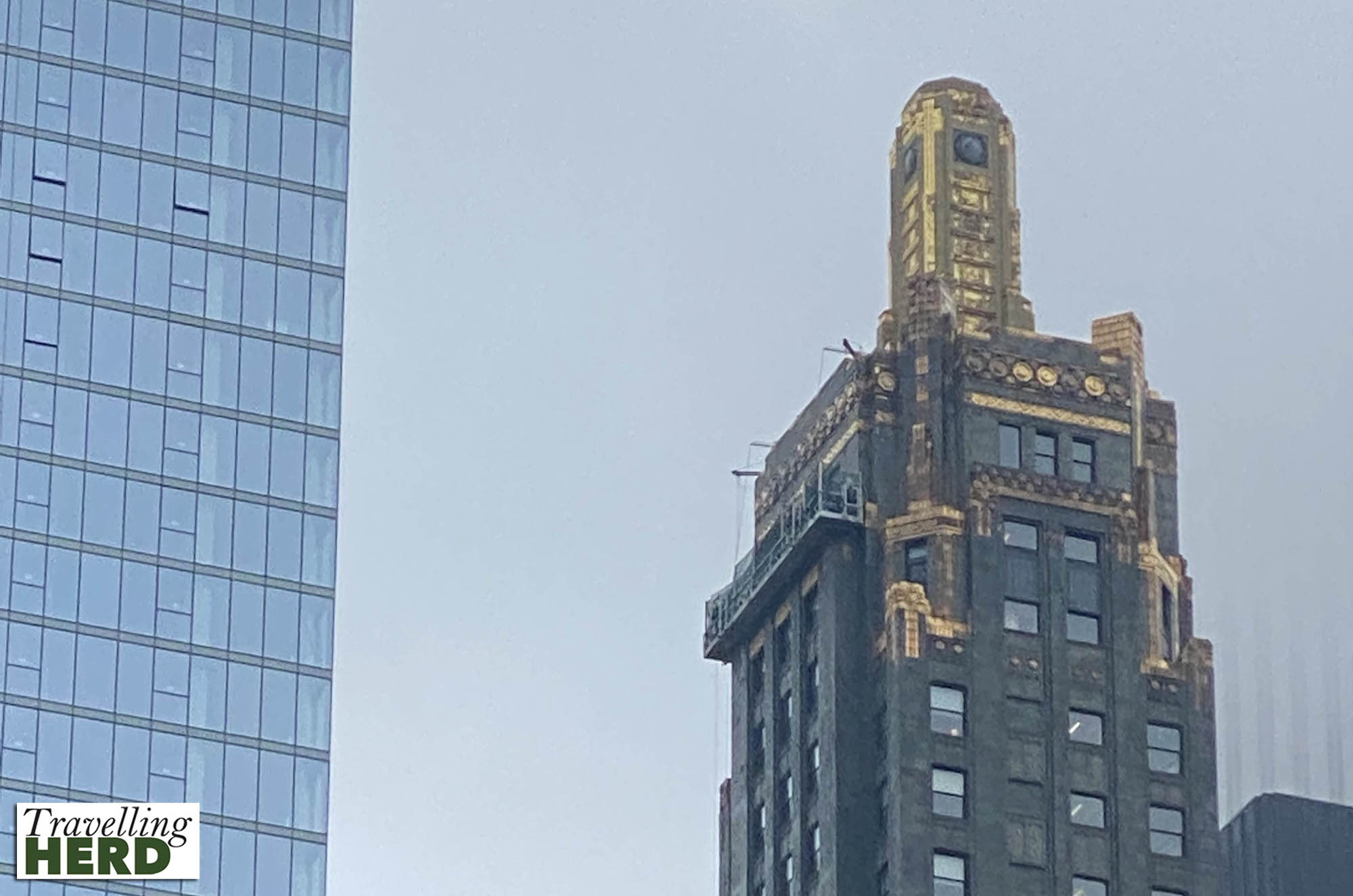
Goose Island is an artificial island formed by the North Branch of the Chicago River on the west and the North Branch Canal on the east. Despite the Goose Island Brewery’s name it has never produced beer on the island.
Vista Tower has been designed with an uninhabited empty space where a screen replaces the walls.

This so-called blow-through floor, the first of its kind in Chicago, is designed to let Chicago’s famous winds pass straight through thereby reducing sway and vibration. This in turn will prevent chandeliers from rattling and residents from needing motion sickness pills. Unfortunately the clouds were obscuring this ingenious design feature.
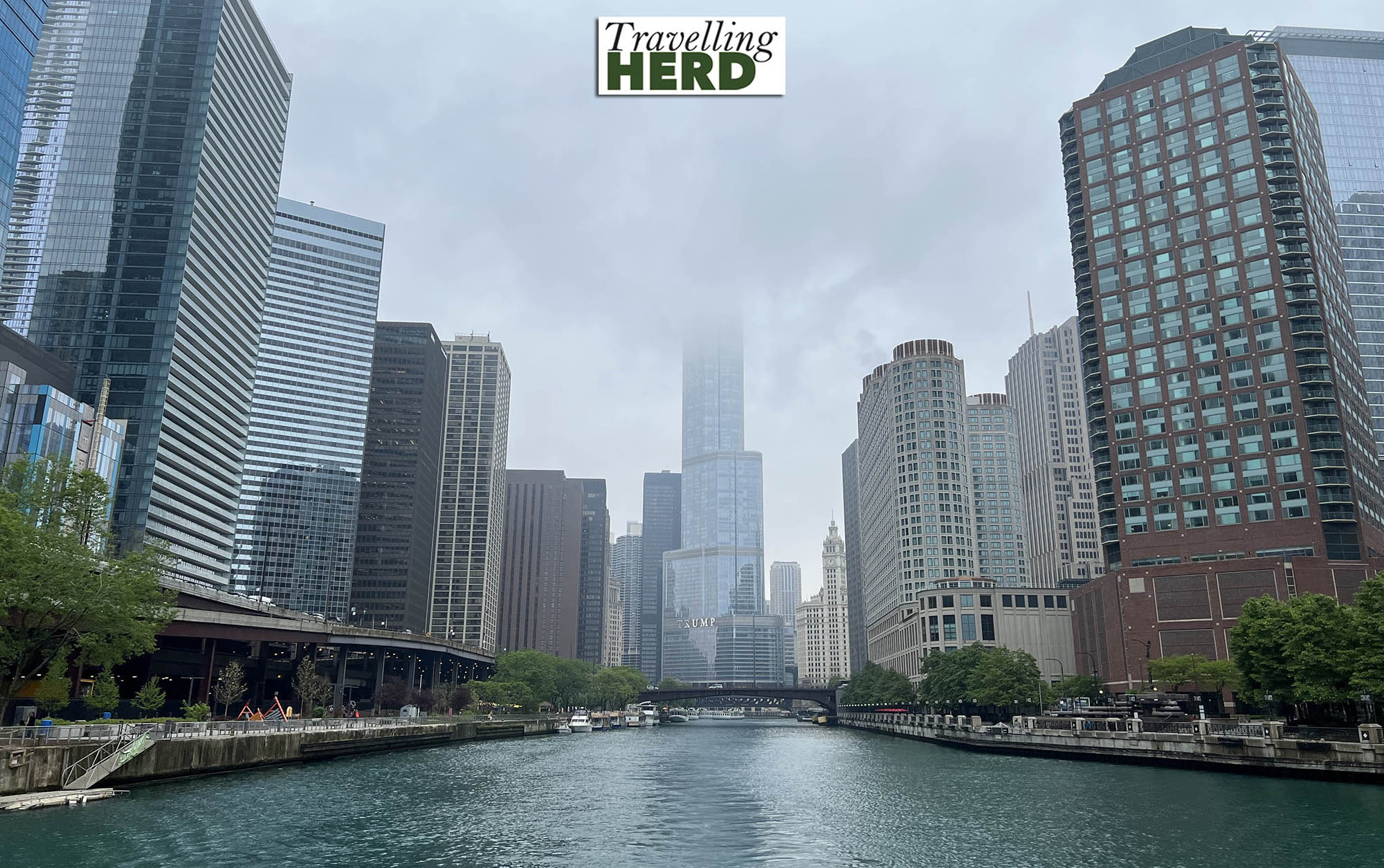
Mass dampers are designed to reduce vibrations and are often in the form of huge water tanks which can hold hundreds of thousands of gallons of water. The principle is that when the wind blows one way, the water moves in the opposite direction thereby counteracting the sway.

The tour takes you out to the Chicago Harbour Lock [above] which links the Chicago River and Lake Michigan. The lock is considerably larger than those we encountered on our recent narrowboat adventure. From here you can look back into the centre of Chicago. The lock is there because at the end of the 18th century, to solve Chicago’s water pollution problem, it was decided to reverse the flow of the Chicago river. Instead of the river flowing, with its pollution, into Lake Michigan, a canal was built to link the Chicago river to the rivers draining into the Mississippi. The water now flows from Lake Michigan down to New Orleans. Presumably improved sewage treatment means that it is no longer taking the pollution with it. The lock had to be built to control the flow of the water and to stop the Great Lakes draining away.
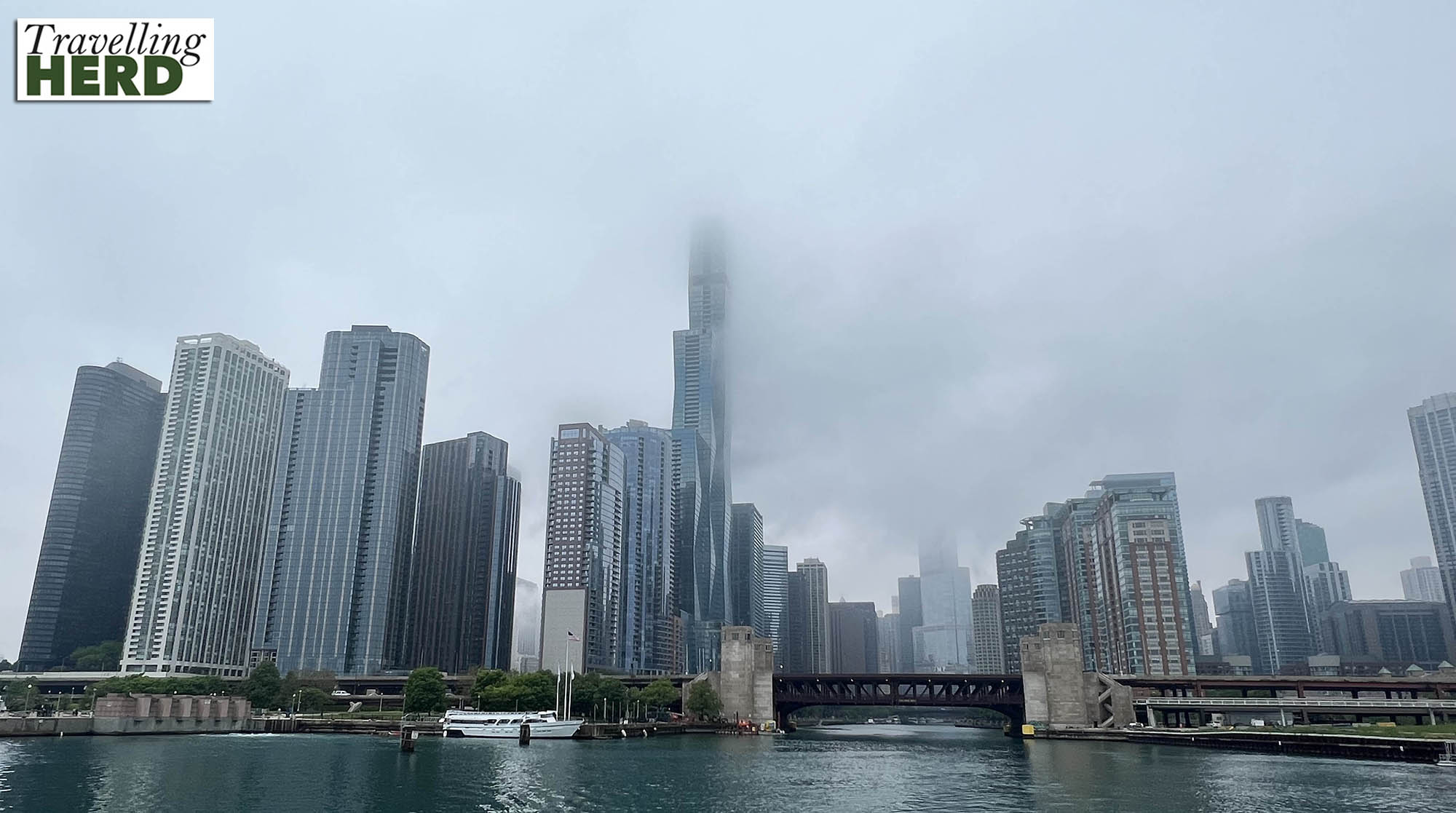
The Apple Store in Chicago was designed by London based architect Norman Foster who is know for his work with glass and steel. Apparently he refused to have the Apple logo on the roof as it would compromise his design but now there is a large dinosaur on one wall to promote a series on Apple TV+.

We were fortunate to be in Chicago on a Wednesday in May when the bridges were being opened in sequence to allow sailing boats to move out from their winter moorings [see also Video of the day].
There seemed to be comparatively little disruption to traffic or pedestrians as the boats waited between bridges for the next one to be opened. It did seem to be taking most of the day though as there are so many bridges. Of the 52 bridges over the Chicago River, 38 are bascule trunnion style drawbridges.

We then visited Mojo Coffee for a little pick me up where the staff were extremely friendly and helpful and where the restrooms were downstairs in a disused bank vault.
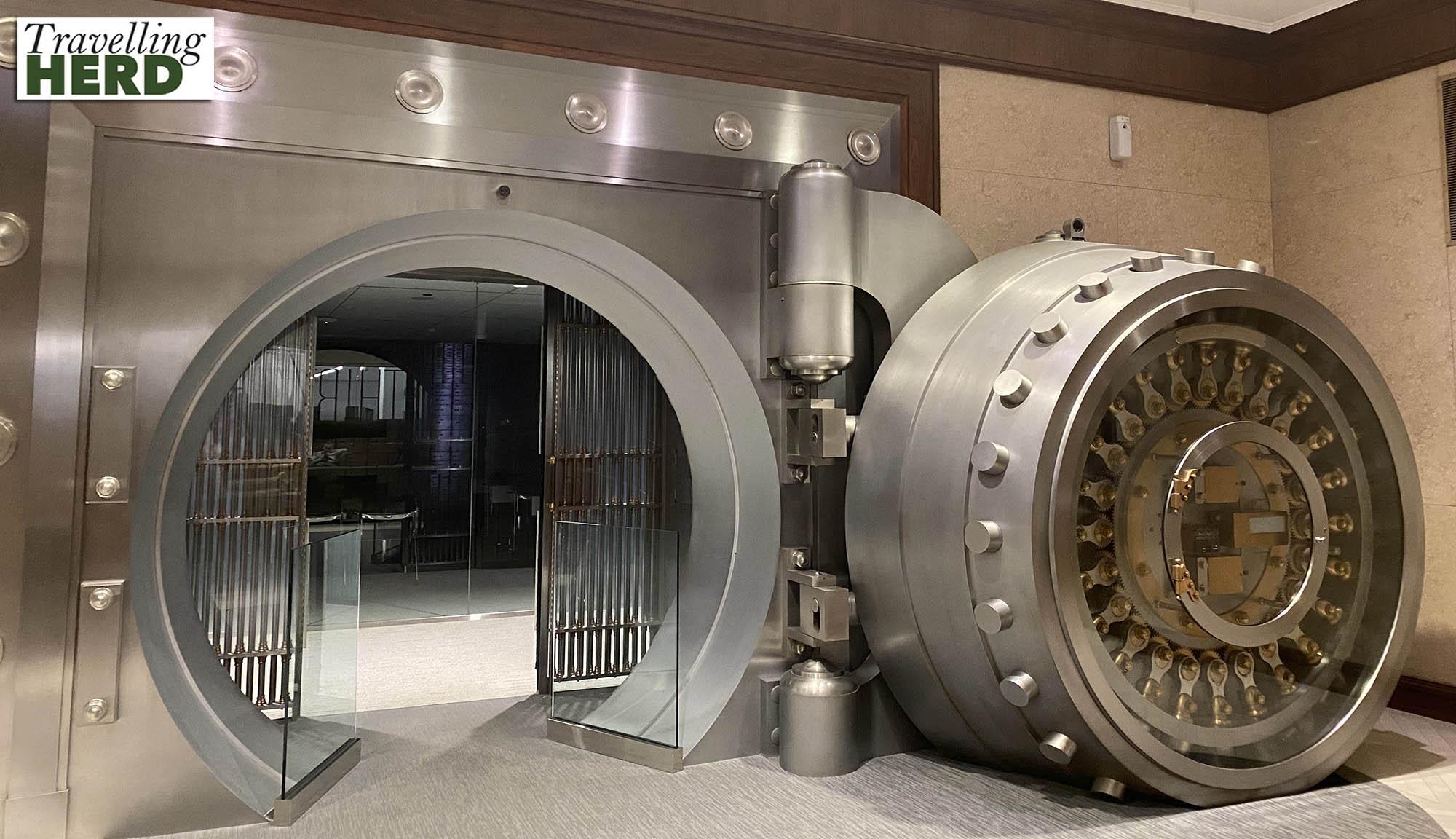
Later, after a little retail therapy on Michigan Avenue, we went to The Billy Goat Tavern. Located across from the United Center, now the home of the Chicago Bulls and the Blackhawks, The Billy Goat Tavern originally became famous as a rowdy and popular sports bar. The owner came to adopt a lost goat and so it gained its name. Baseball fans know the story of the “Curse of the Cubs”, which originated here apparently because the goat was not allowed in Wrigley Field during the 1945 World Series.
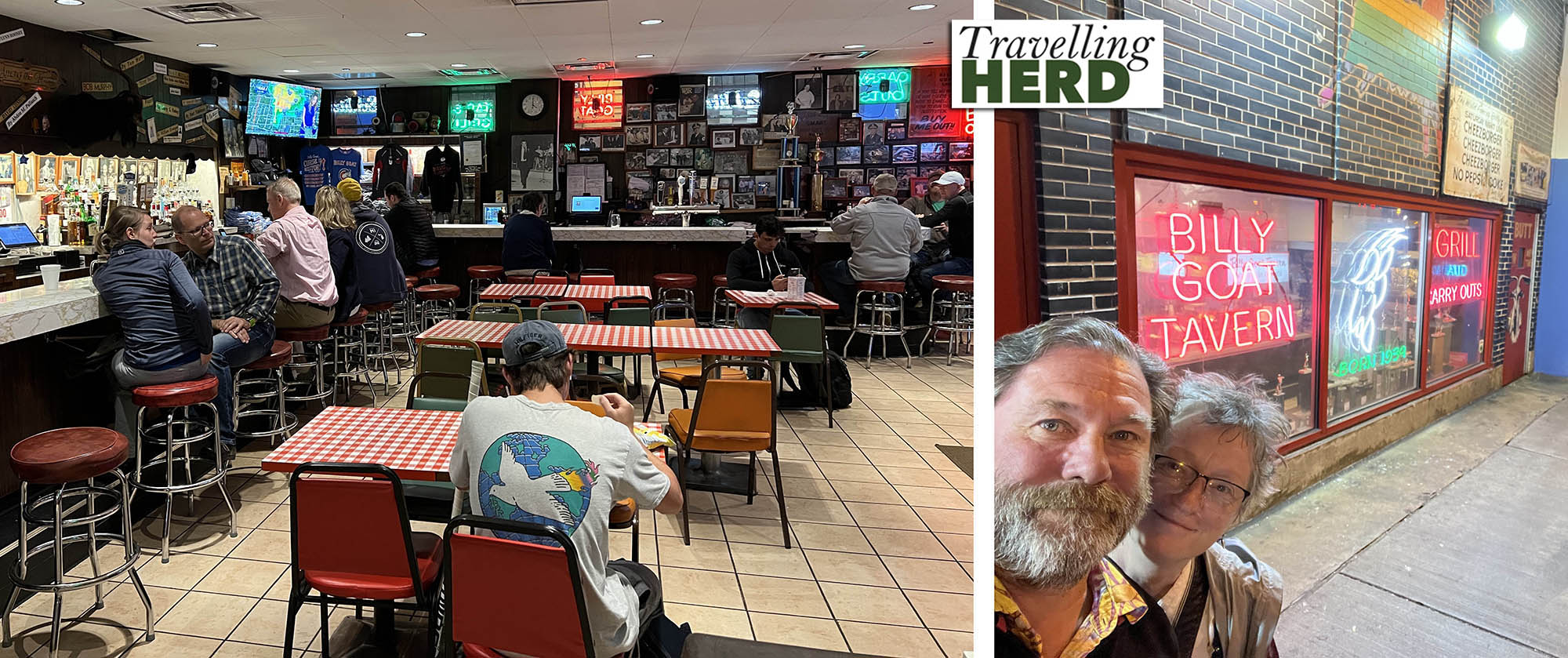
The bar Three dots and a dash had been recommended to us. The name is derived from the morse code for V (for victory) with the obvious connotation of adding a dash of mixer to a spirit. The bar staff were competing with Robert on the shirt front and it was a curious combination of beach bar meets day of the dead celebrations. As there was no draft beer we only stayed for one.
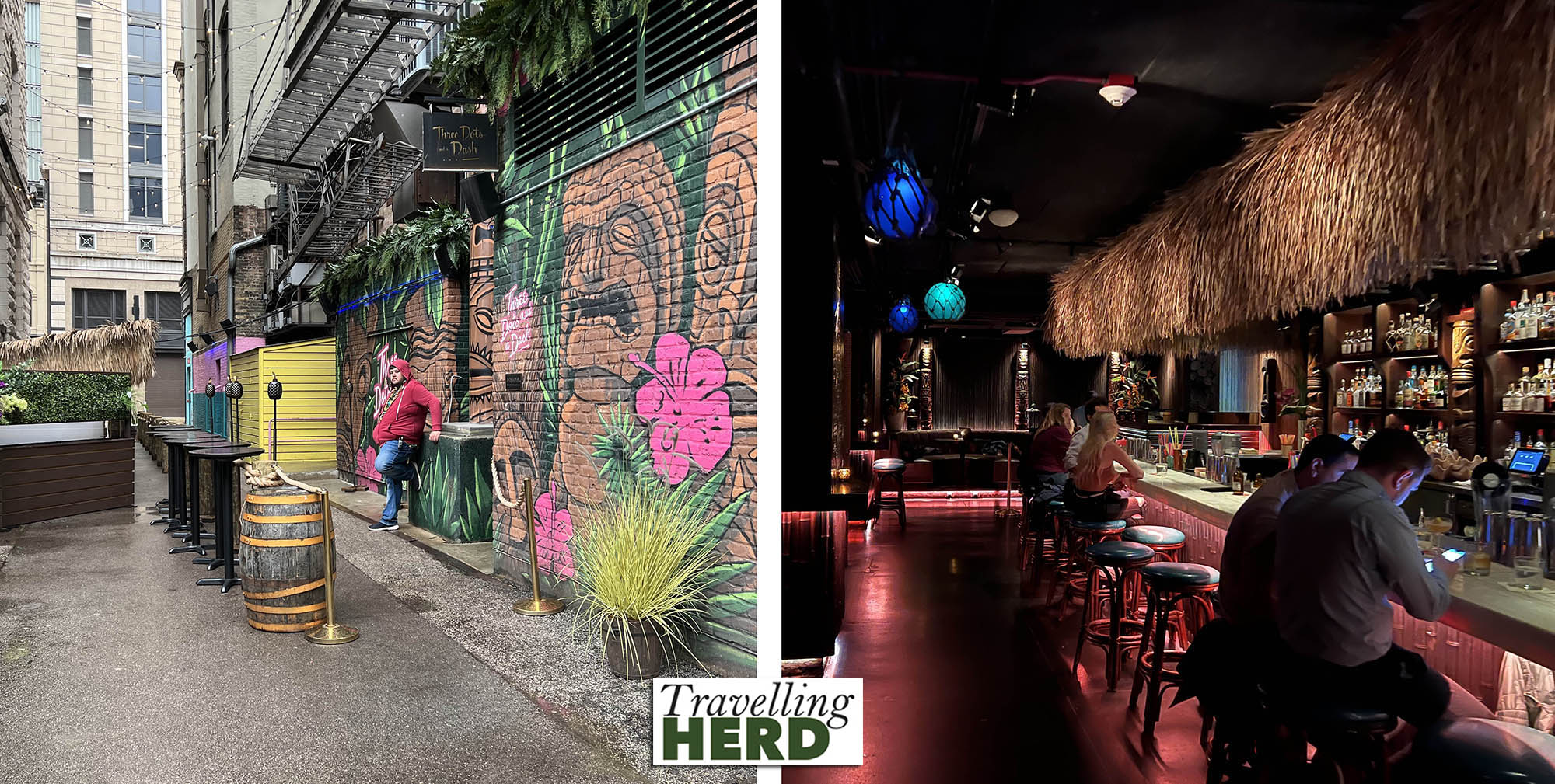
We obviously had to add the Chicago Hard Rock Cafe to our list.
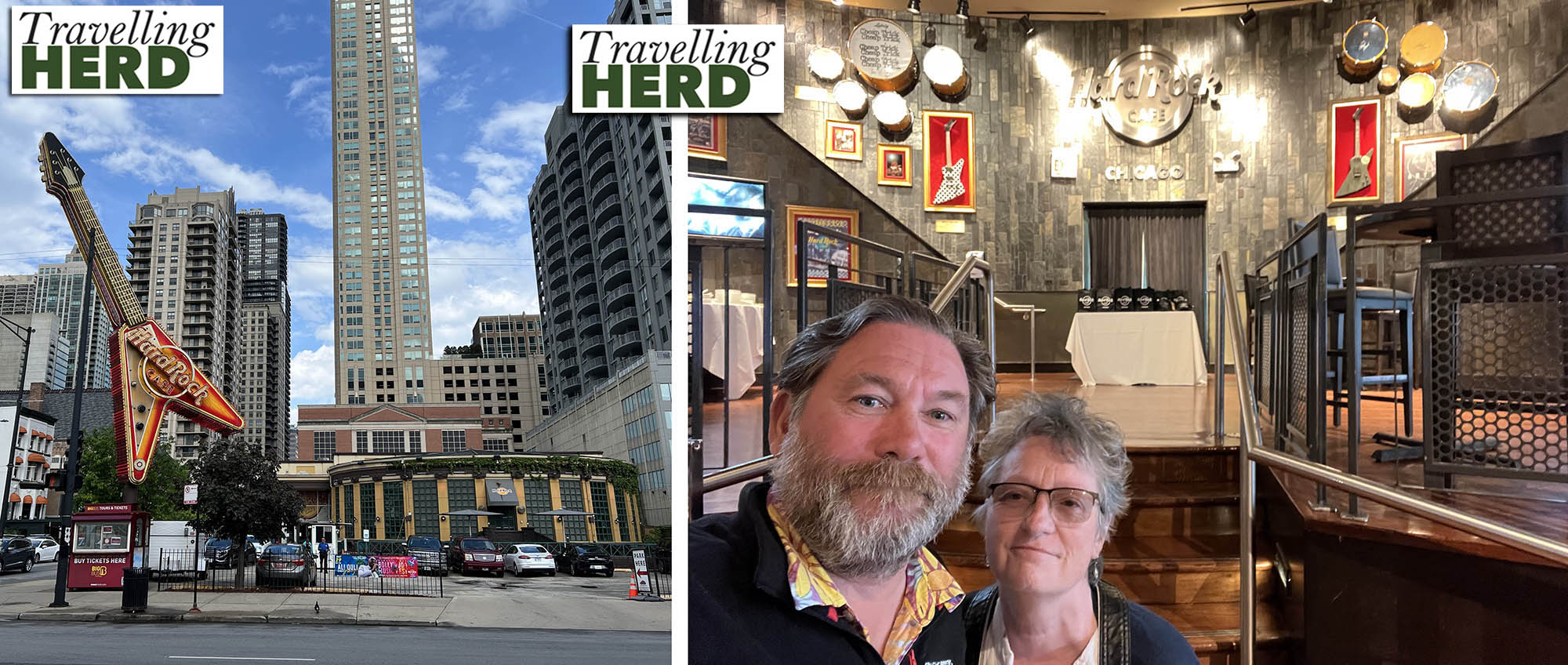
The storm and heavy rain which had been forecast eventually made an appearance.
We thought we should sample a Chicago style pizza while we were here and stopped at Giordano’s. Apparently with a Chicago pizza, the dough is pressed to the side to create a crispy edge, but Matilda felt it rather defeated the object of the exercise as Robert left quite a few of his crusts [see Dish of the day]. We also had a doggy bag for lunch the next day.
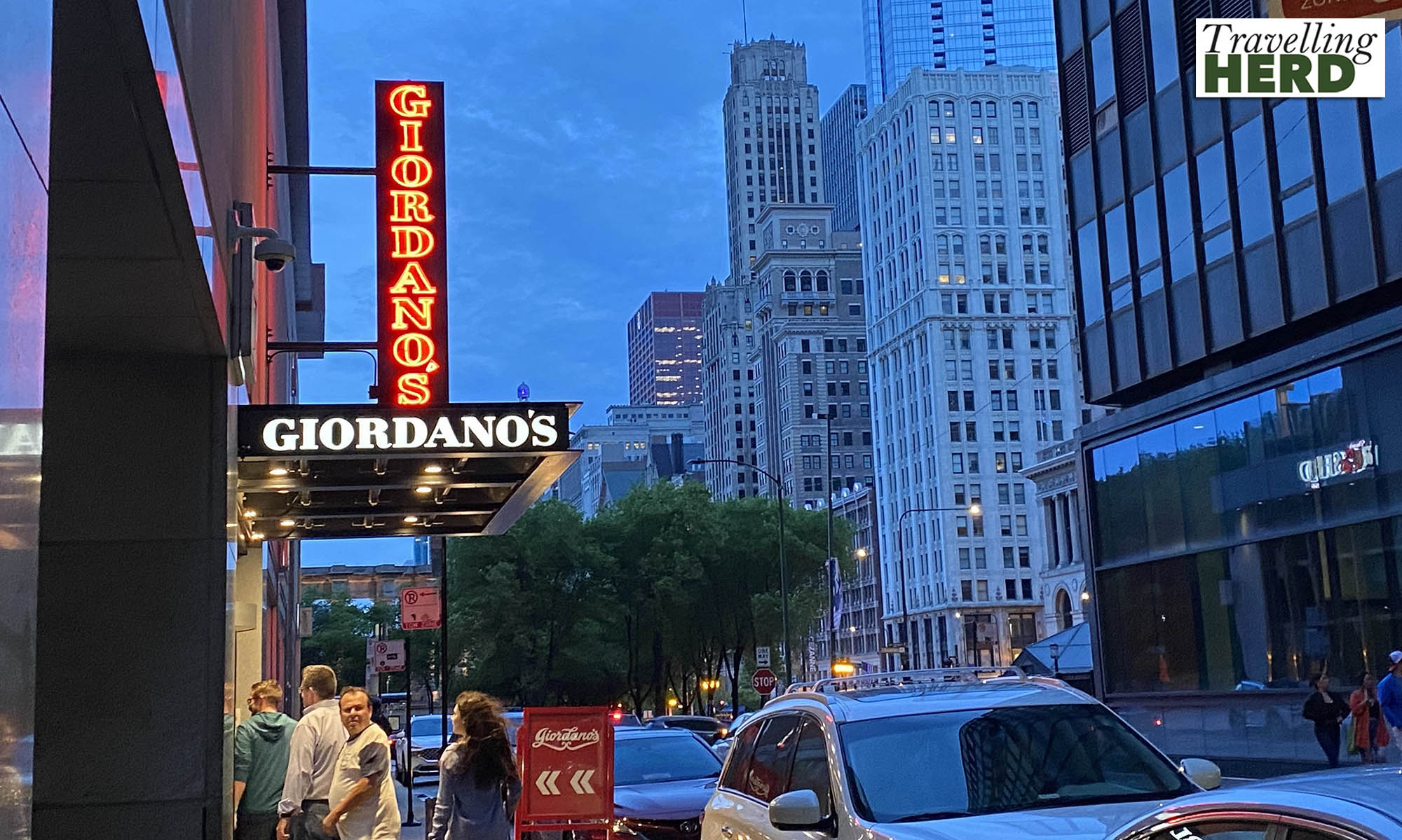
Afterwards we walked back along the river to our hotel.
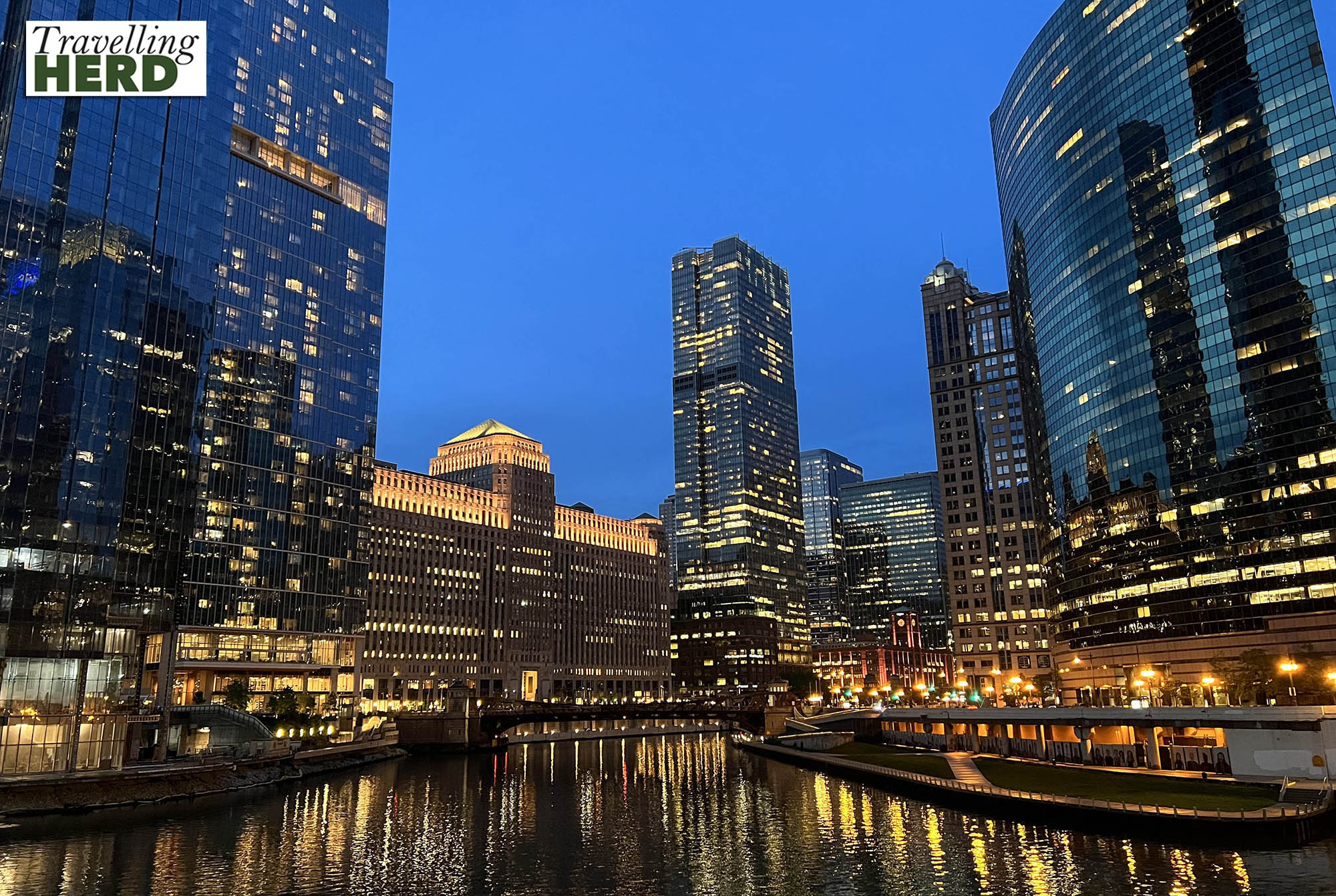
Video of the day:
Selfie of the day:
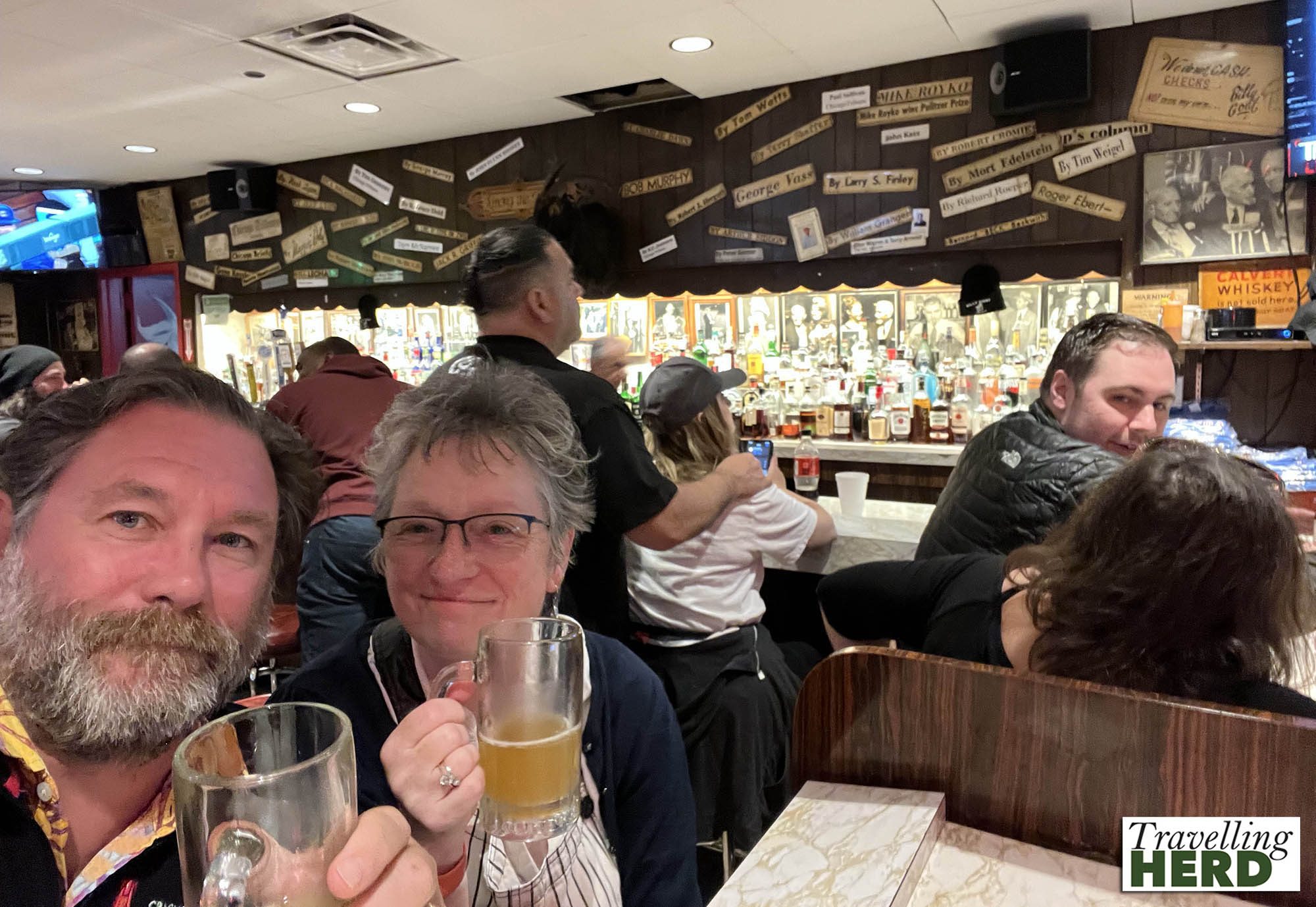
Dish of the day:
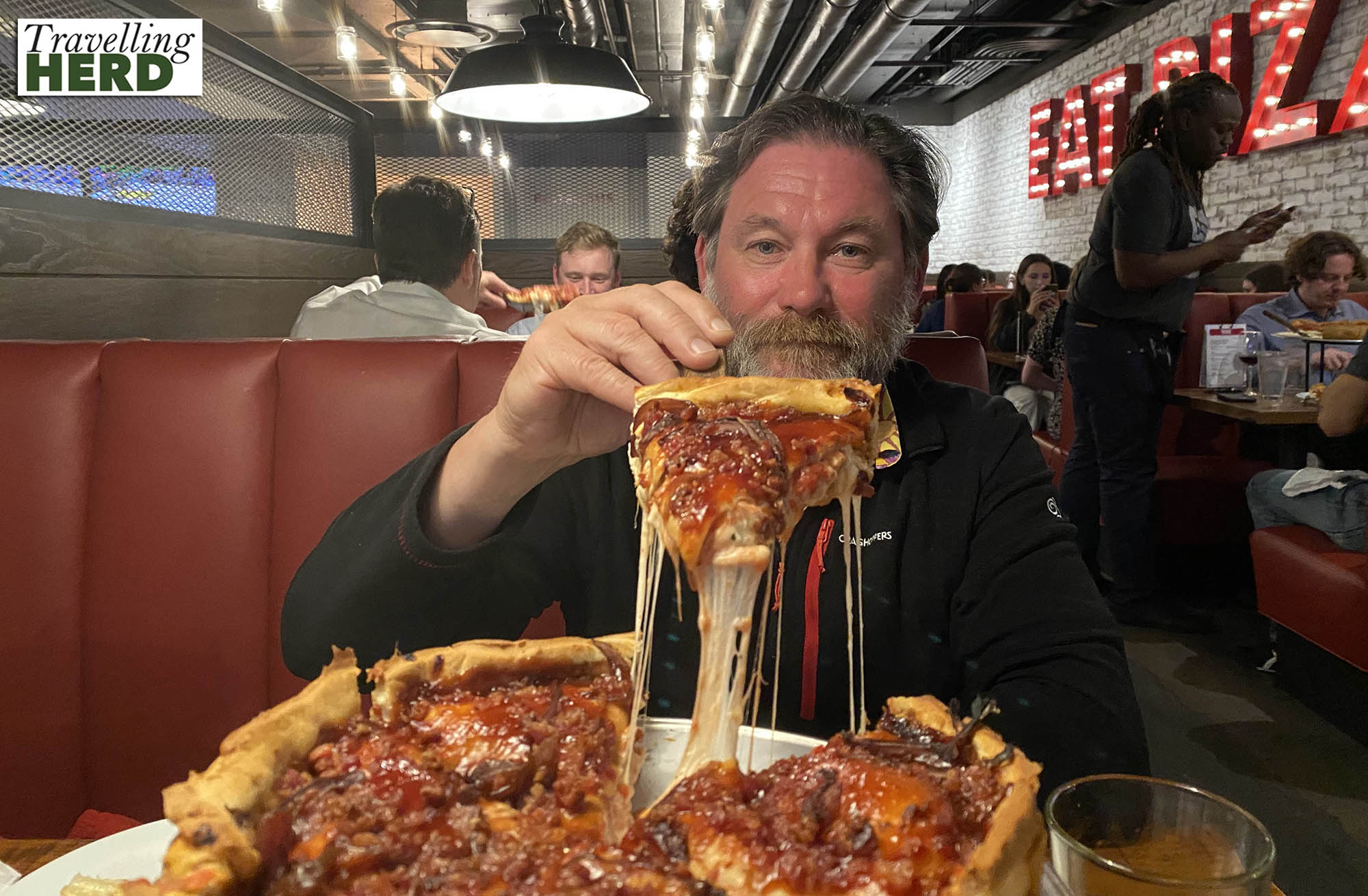
Route Map:
